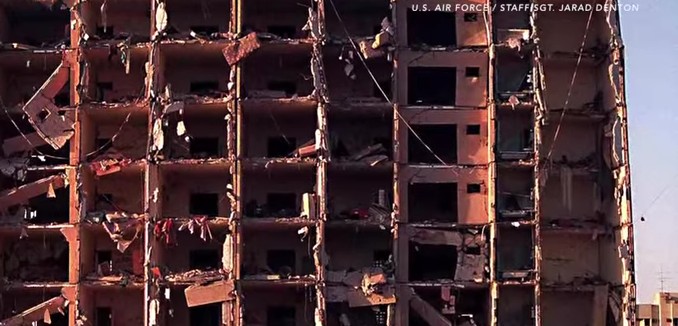The recently reported arrest of Ahmed al-Mughassil, the head of Saudi Hezbollah, for the 1996 bombing of the United States military barracks at the Khobar Towers complex in Saudi Arabia has once again emphasized the heavy involvement of both Iran and its Lebanese proxy Hezbollah in orchestrating the terror attack. In a recounting of the bombing published earlier this week in Foreign Affairs, Matthew Levitt, director of The Washington Institute for Near East Policy’s Stein Program on Counterterrorism and Intelligence, detailed the extensive Iranian support for the operation.
Mughassil, who was indicted in 2001 for his role in the attack, was forced to flee Saudi Arabia in the 1990’s for Lebanon. It was from Beirut that he began plotting the Khobar Towers bombing. The motive for the attack, according to the indictment (.pdf), was “to serve Iran by driving the Americans out of the Gulf region.”
The preparation for the bombing involved extended surveillance, in which Iran and Hezbollah both played a significant role.
In all likelihood, what enabled the Saudi Hezbollah cell members to successfully execute these surveillance efforts undetected was their prior training in Lebanon and Iran. But they also enjoyed close oversight and support during the operation from senior Lebanese Hezbollah and Iranian officials. During the cells’ surveillance activities, for example, Mughassil told one operative that he had received a phone call from a high-level Iranian government official inquiring about their progress. Later, according to the U.S. indictment, Mughassil further confided that “he had close ties to Iranian officials, who supplied him with money and gave him directions.” Indeed, Saudi information suggests that he “has strong family ties to Lebanese Hezbollah and has been in contact with the office of the Supreme Leader Khamenei.”
The first team Mughassil assembled to execute the operation was caught and arrested. Forced to recruit a new team, Levitt wrote that Mughassil provided one of his recruits “a forged Iranian passport.” As the plot progressed, Levitt wrote that a “Lebanese Hezbollah operative” helped Mughassil’s team assemble the bomb. Once the terror squad had purchased a truck and arranged transportation, they launched the attack on June 25, 1996, killing 19 United States Air Force personnel and injuring nearly 500 people.
Two members of the Saudi Hezbollah cell left the farm first, shortly before 10 P.M. Driving a Datsun, the two pulled into the parking lot adjoining building 131 at Khobar Towers and parked in the far corner. Serving as scouts, they scanned the area for patrols or anything else that might disrupt their attack. A white Chevrolet Caprice sedan entered the lot next. The Caprice was borrowed from an acquaintance, who likely had no idea that his car would serve as the getaway for the perpetrators of a massive terrorist bombing. Seeing no problems, the scouts flashed the Datsun’s headlights, signaling the “all clear” for the final vehicle to enter the lot. On their signal, the truck bomb entered, driven by Mughassil himself with one other passenger. They backed up the truck to the fence in front of building 131, then jumped into the backseat of the waiting getaway car, which drove away, followed by the lookouts in the signal car.
Minutes later, the bomb exploded, leaving a crater 85 feet wide and 35 feet deep. The blast was the largest non-nuclear explosion then on record and could be felt 20 miles away across the causeway in Bahrain. Nineteen U.S. service personnel were killed, and almost 500 more people from at least seven countries were wounded.
Though the events surrounding Mughassil’s arrest last month remain unknown, Levitt pointed out that his arrest could allow scrutiny of Iranian-backed terror in the Middle East, observing that, “the Farsi-speaking Mughassil is uniquely positioned to shed much-needed light on the covert activities of Iranian operatives and their agents and proxies in the region.”
[Photo: Newsy World / YouTube ]




